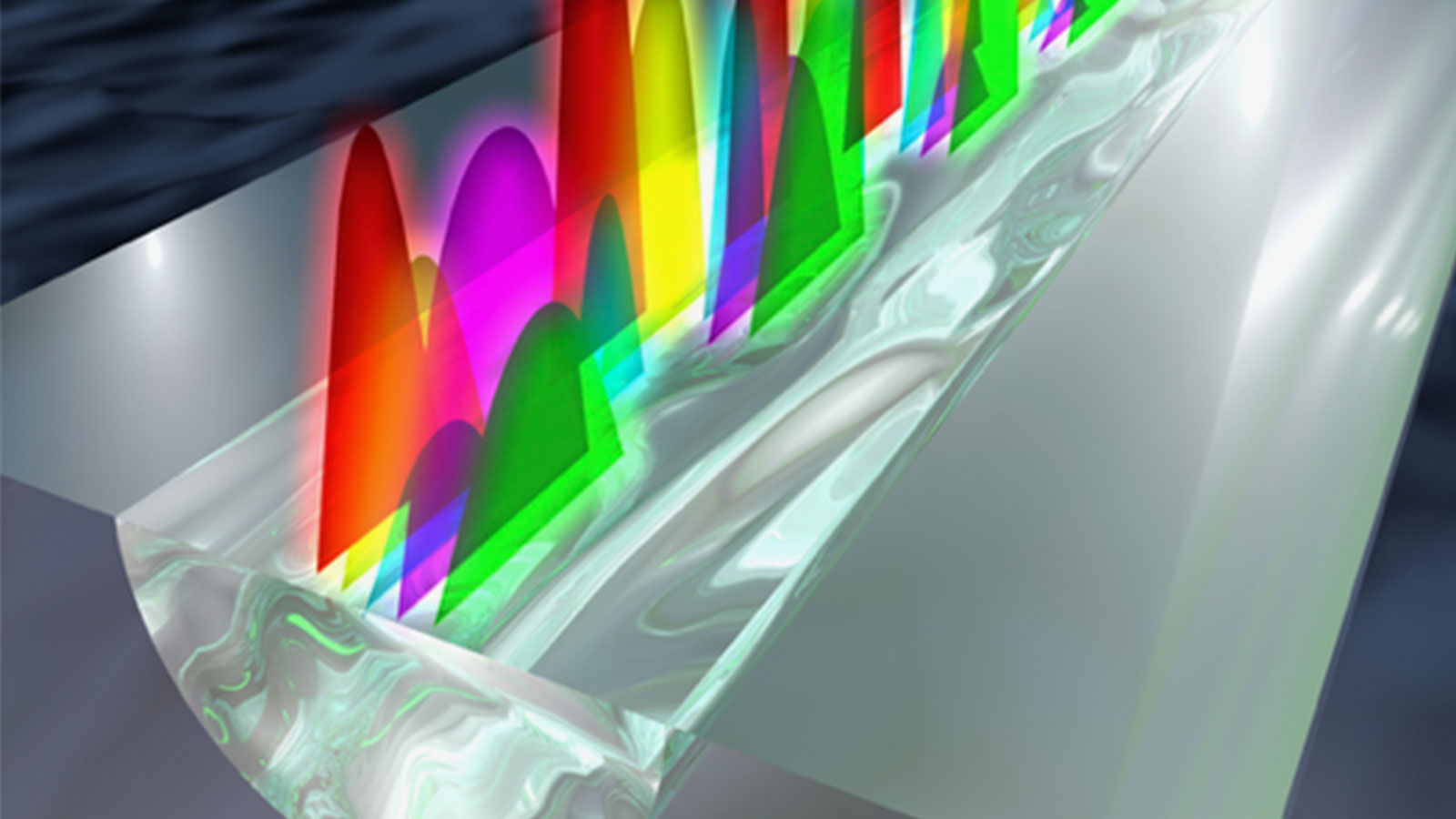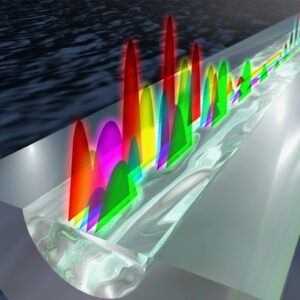- Home
- Junior Research Groups
- Smart Photonics
- Research results
- Diving into the secrets of soft matter photonics: Optical fibers with a liquid core
Diving into the secrets of soft matter photonics: Optical fibers with a liquid core

30.11.2023
In the vast realm of optics and photonics, exploring unconventional materials has always been a driving force behind groundbreaking discoveries. One such uncharted territory is the world of soft-matter photonics, where liquids, gels, and bio-materials take center stage. The recent review titled “Liquid-Core Optical Fibers – A Dynamic Platform for Nonlinear Photonics” offers a deep dive into this fascinating domain, shedding light on the potential of liquid-enhanced fibers.
While the concept of nonlinear optics in liquid-enhanced waveguides might seem avant-garde, its roots trace back to the 1970s. These early pioneers recognized the potential of liquids as waveguide materials, offering unparalleled control over system parameters, locally tunable dynamics, and unique molecular motions. One of the most intriguing aspects is the picosecond optical memory induced by these molecular motions, which plays a pivotal role in ultrafast spectral broadening dynamics, such as supercontinuum generation. The review is not just a historical account but a holistic guide for any researcher venturing into the field of soft-matter photonics. It meticulously summarizes major experimental findings in nonlinear optics and provides a comprehensive compendium on:
• Material models of the most common nonlinear liquid
• Typical fabrication processes of liquid-enhanced fibers
• Numerical modeling of nonlinear pulse dynamics.
Moreover, the paper delves into phenomena unique to liquids, such as modified solitary states, local dispersion control, and the impact of different molecular processes on the nonlinear response of liquids. Liquid-core optical fibers are not just a subject of academic interest; they hold the promise of revolutionizing the way we perceive and utilize optical devices. With their exceptional transparency, nonlinearity, and reconfigurability, these fibers are poised to become a cornerstone in the next generation of broadband optical light sources, signal processors, and more. Their unique properties, such as unparalleled thermo-optic sensitivity and dominant non-instantaneous molecular responses, open doors to scientific explorations previously deemed unattainable. Imagine a world where fibers can be locally tuned, enabling adaptive devices that can change their properties on-the-fly. The potential for creating tunable multiwavelength light sources, low-power nonlinear signal processors, and even low-noise photon pair sources is immense.
In conclusion, for anyone intrigued by the confluence of materials science, nonlinear optics, and engineering, this review is a must-read. It not only offers a wealth of knowledge but also ignites the imagination, hinting at the endless possibilities that lie ahead in the world of soft-matter photonics.
In the picture:
Artistic representation of light waves interacting nonlinearly in a fiber with a liquid core, thereby exchanging energy and generating new frequencies.
In the picture:
Selected nonlinear optical experiments in liquid-core fibers with a focus on broadband frequency generation. a) The experiments are ordered accordingly to the fiber dispersion at their respective pump wavelength and to the pump pulse width, which allows grouping them according to the dominant broadening processes. Each marker contains information about the core liquid (corresponds to marker color) and the fiber type (corresponds to marker style) used in the experiment, as specified in the legend above. b) An overview of the achieved spectral coverage in the experiments is mentioned in (a). Information about the core liquid and fiber type used in the experiment is encoded in the line style and the line color (see legend in (a)), respectively. Note that in both panels, an asterisk (*) marks the work which uses liquids in the fiber cladding rather than as core medium. ©https://doi.org/10.1002/lpor.202300126


